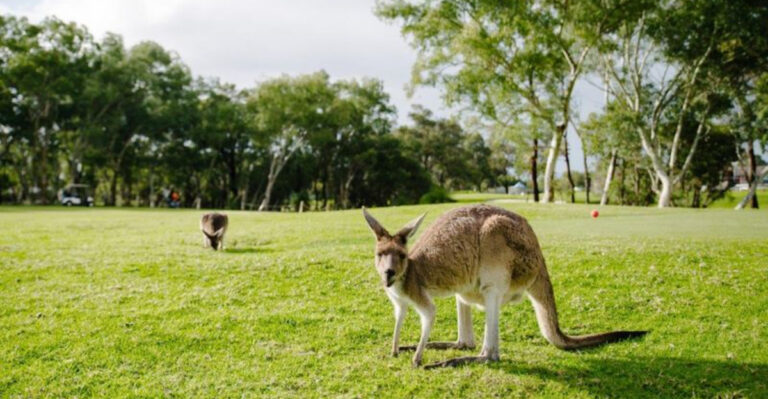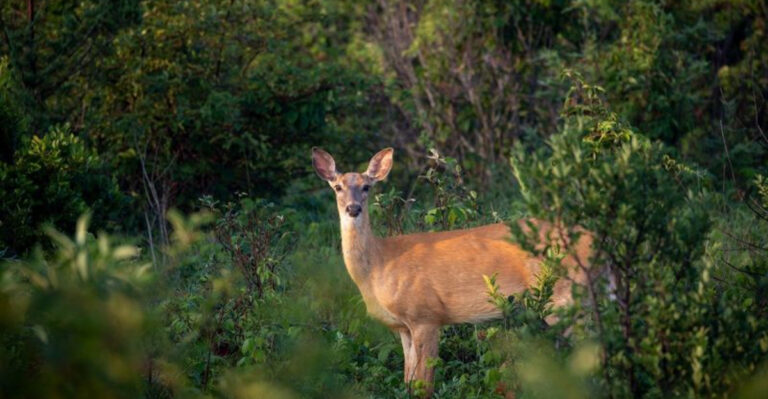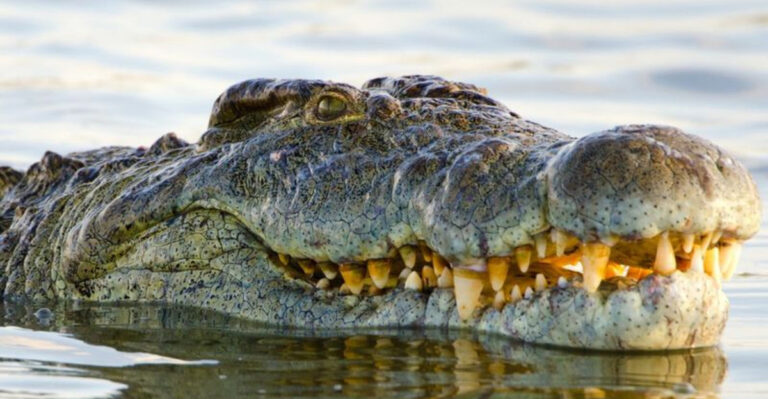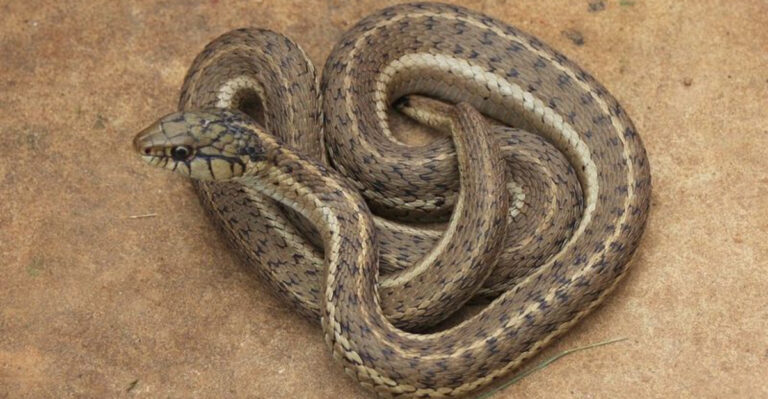17 Fascinating Wild Cats You’ve Probably Never Heard Of

Wild cats come in all shapes and sizes, from the mighty lion to the elusive jaguar. But beyond these famous felines lies a world of lesser-known wild cats with remarkable adaptations and behaviors.
These extraordinary creatures inhabit remote corners of our planet, each with unique hunting styles, distinctive markings, and surprising abilities that have helped them survive in challenging environments.
1. Flat-Headed Cat
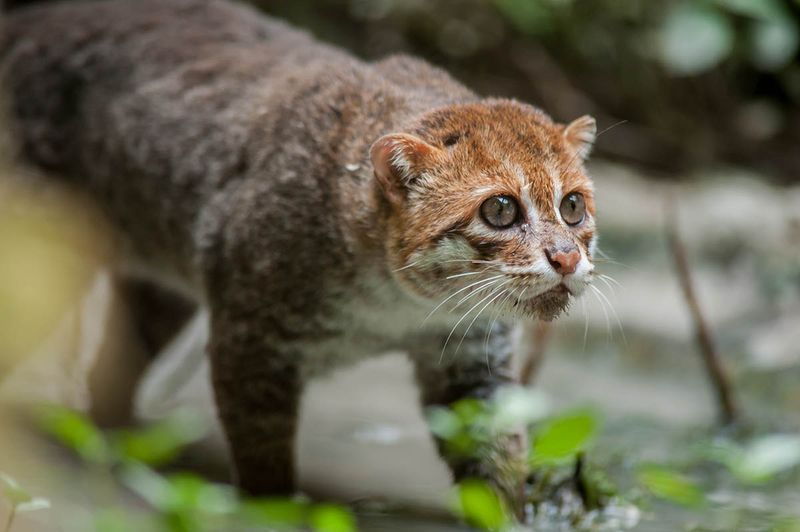
Swimming enthusiasts of the cat world! Flat-headed cats have webbed feet and an unusual skull shape that gives them their name. Native to swampy areas of Thailand, Malaysia, and Indonesia, they’re exceptional fishers who can scoop prey from water with astonishing precision.
These small cats (weighing just 1-2kg) have forward-set eyes perfect for spotting fish. Sadly, they’re among the most endangered wildcats due to wetland destruction. Their population has plummeted by over 50% in the past decade.
2. Pallas’s Cat
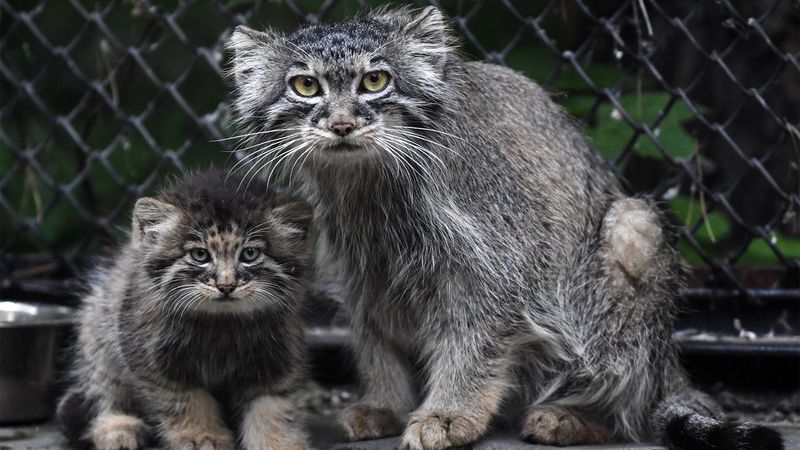
Round pupils instead of slits? That’s the Pallas’s cat for you! These fluffy, expressive felines from Central Asian highlands look larger than they actually are thanks to their incredibly dense fur – the longest and thickest of any cat species.
Masters of camouflage, they blend perfectly with rocky terrain while hunting small mammals. Their grumpy facial expressions have made them internet sensations. Despite their cuddly appearance, they’re fierce predators who can survive in temperatures as low as -50°C.
3. Rusty-Spotted Cat
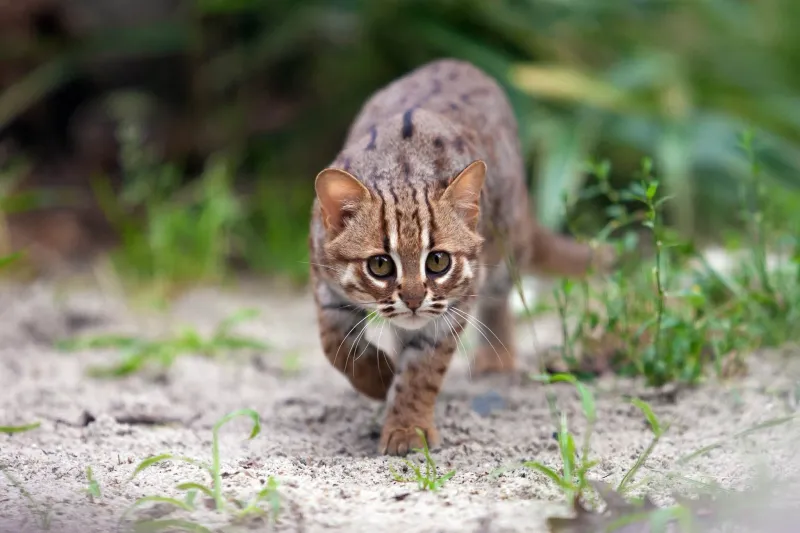
Barely bigger than a kitten! The rusty-spotted cat holds the title of world’s smallest wild cat, weighing just 1-1.6kg when fully grown. Native to India and Sri Lanka, these miniature hunters possess incredible agility, leaping five times their body length with ease.
Their coat features beautiful rusty spots on a gray-brown background. Despite their diminutive size, they’re fearless predators who take down prey larger than themselves. They’ve adapted to life in human-altered landscapes, sometimes hunting in agricultural fields.
4. Fishing Cat
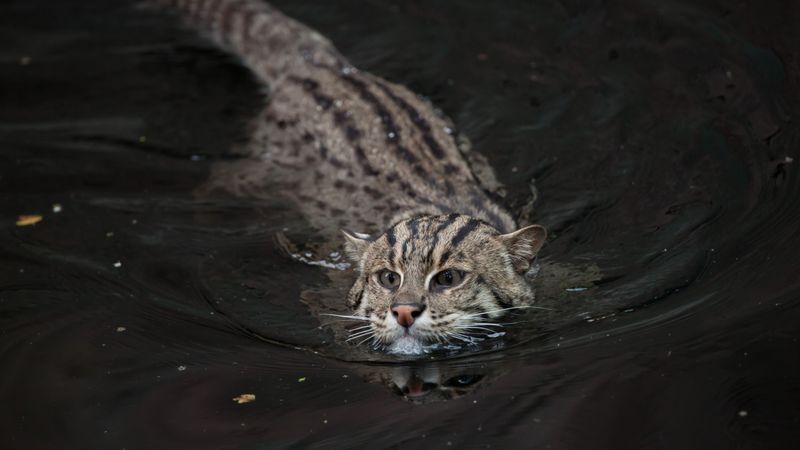
Diving headfirst into water isn’t typical cat behavior – unless you’re a fishing cat! These medium-sized felines from South and Southeast Asia have partially webbed feet and a water-resistant coat that helps them excel as aquatic hunters.
Unlike most cats who detest water, fishing cats are powerful swimmers who can remain submerged while grabbing fish with their sharp claws. Their short, rudder-like tail provides steering during underwater pursuits. Wetland destruction has made them vulnerable to extinction.
5. Marbled Cat
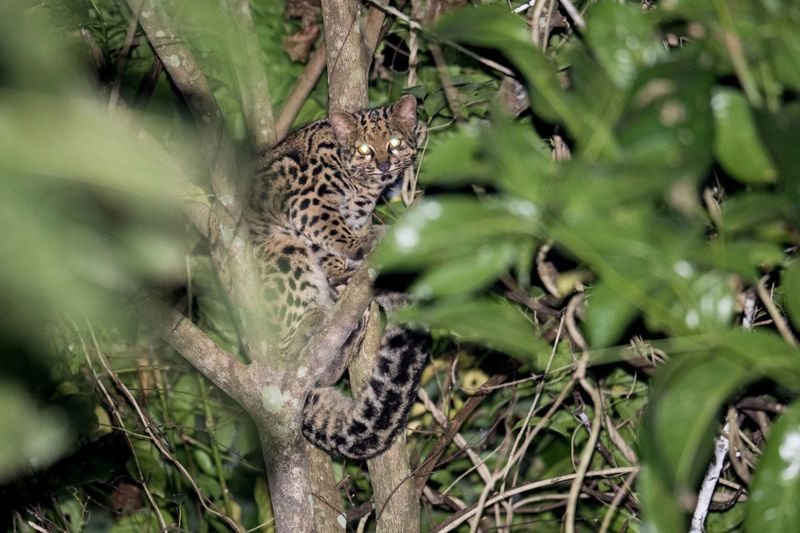
Tree-dwelling artists of the feline world! Marbled cats sport some of the most beautiful coat patterns – large, irregular blotches resembling marble – hence their name. Native to Southeast Asian forests, they’re rarely spotted by humans.
Their extra-long tails, nearly matching their body length, provide perfect balance for aerial acrobatics. With specialized ankle joints that rotate 180 degrees, they can descend trees headfirst like squirrels. Their arboreal lifestyle keeps them mysterious – scientists have only recently begun studying them with camera traps.
6. Black-Footed Cat
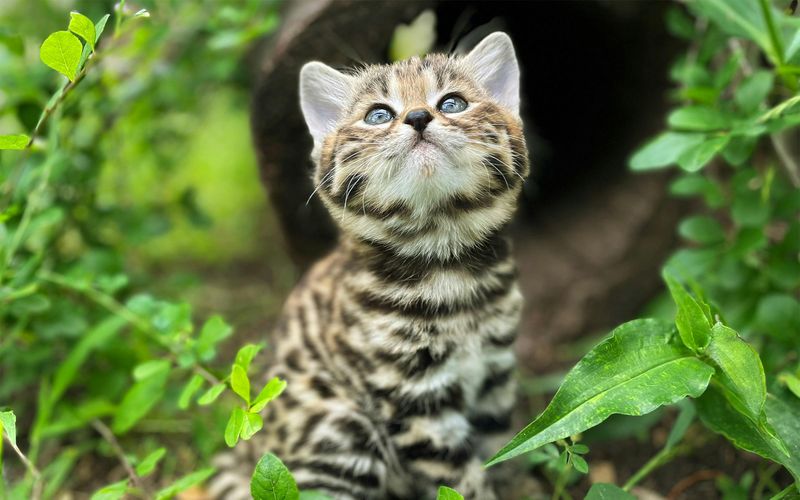
Pound for pound, Africa’s deadliest cat! Don’t let the adorable appearance fool you – these tiny predators have the highest hunting success rate of any feline at 60%, compared to lions at just 20%.
Native to southern Africa’s arid regions, black-footed cats weigh only 1-2kg but can catch up to 14 prey animals in a single night. Their name comes from the distinctive black fur on their paws and foot pads. Solitary and nocturnal, they can travel up to 20 miles nightly while hunting.
7. Jaguarundi
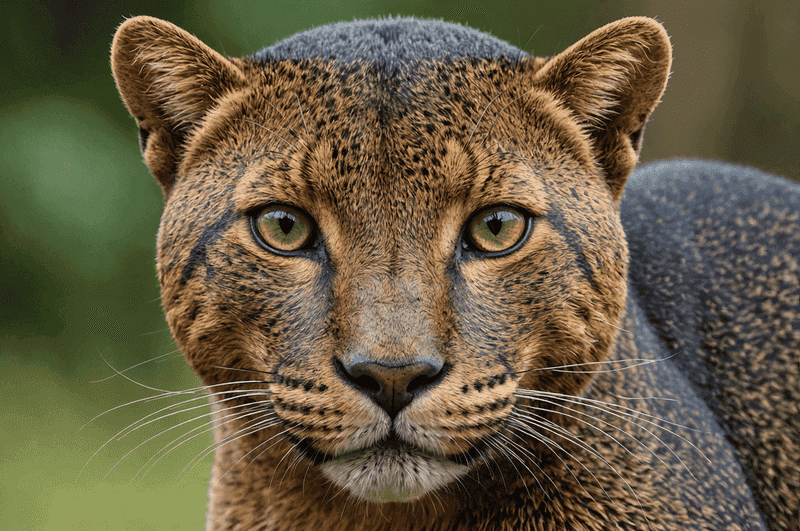
Otter-faced and long-bodied, the jaguarundi breaks the typical cat mold. Found across Central and South America, these unusual felines lack the spotted patterns common in wildcats, instead sporting solid coats in either rusty-red or charcoal-gray coloration.
Unlike most cats, jaguarundis are primarily diurnal (active during daylight) and comfortable in water. Their elongated bodies and short legs help them pursue prey through dense underbrush. They vocalize more than most wildcats, with an impressive repertoire of 13 different calls.
8. Oncilla
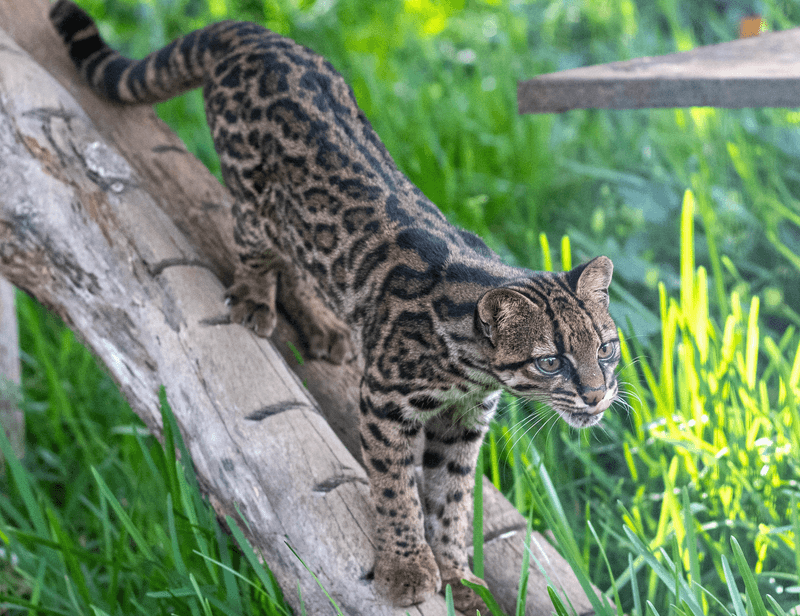
Miniature leopards of the rainforest! Oncillas resemble tiny versions of ocelots, with beautiful spotted coats that help them disappear into dappled forest light. These small cats from Central and South America typically weigh just 3kg.
Primarily tree-dwellers, they hunt birds, lizards, and small mammals in the canopy. Genetic studies revealed something fascinating – oncillas from different regions don’t interbreed and may actually be separate species. Their adaptability is impressive, living from sea level up to 11,000 feet in mountain forests.
9. Andean Mountain Cat
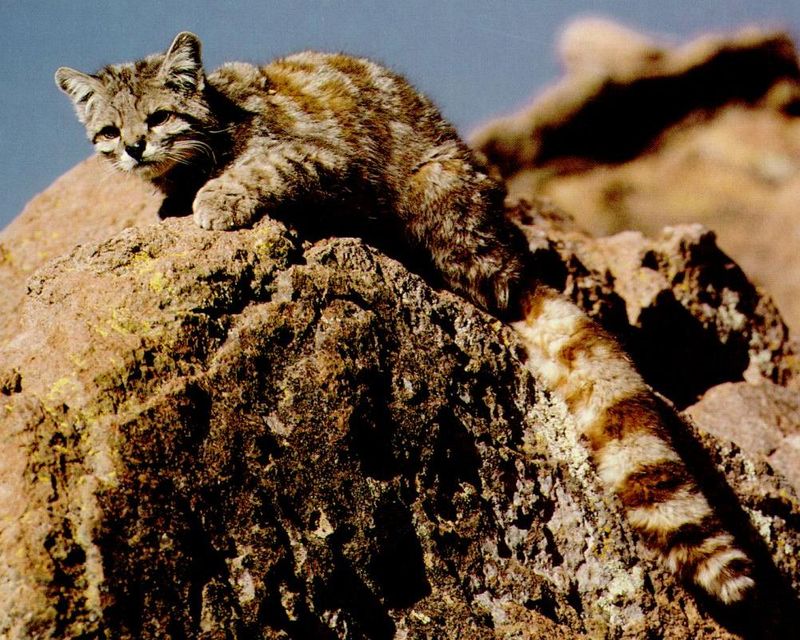
Ghost cats of the Andes! So elusive that scientists didn’t photograph a live one until 1998. These silver-gray felines with distinctive ringed tails survive at extreme altitudes above 13,000 feet where few other predators venture.
Specially adapted to high-altitude living, they have thick fur and primarily hunt mountain viscachas (rabbit-like rodents). Indigenous Andean communities consider them sacred animals. With fewer than 2,500 adults remaining in the wild across Peru, Bolivia, Chile, and Argentina, they’re among the most endangered cats worldwide.
10. Caracal
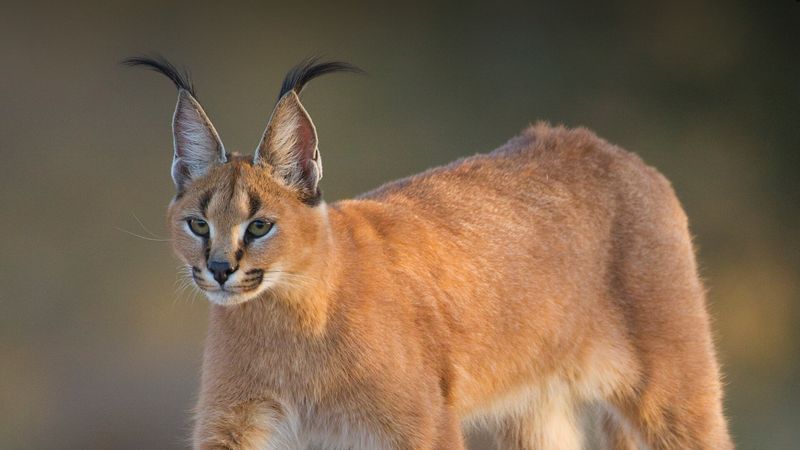
Aerial hunters with spectacular ears! Caracals are instantly recognizable by their long black ear tufts, which can be up to 1.75 inches long. These medium-sized desert cats from Africa and parts of Asia can leap over 10 feet high to snatch birds mid-flight.
Their name comes from the Turkish word “karakulak,” meaning “black ear.” Unlike many wildcats, caracals don’t fear water and are excellent swimmers. Ancient Egyptians tamed them for hunting and featured them in their artwork. Their incredible agility has made them stars of viral videos.
11. Clouded Leopard
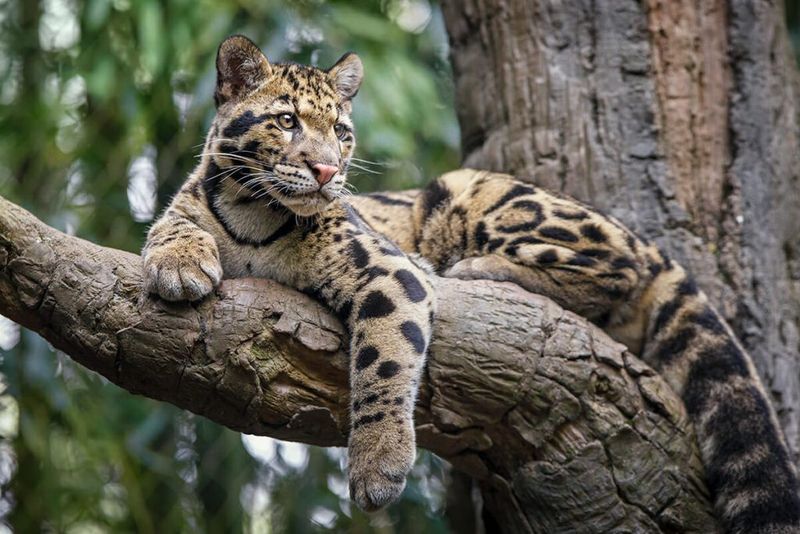
Nature’s perfect climber! Clouded leopards possess the longest canine teeth relative to body size of any cat – comparable to prehistoric saber-toothed tigers. Their cloud-like markings give them perfect camouflage in the dappled light of Asian rainforests.
With incredibly flexible ankle joints, they can climb down trees headfirst and even hang from branches using their hind feet. Despite weighing only 35-50 pounds, they can take down prey three times their size. Their tail, nearly as long as their body, provides perfect balance for arboreal acrobatics.
12. Serval
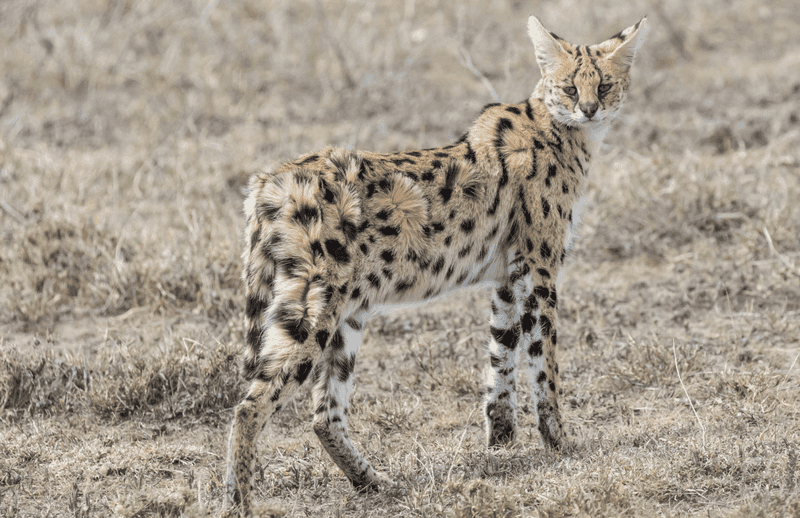
Leggy specialists with satellite-dish ears! Servals have the longest legs relative to body size of any cat, allowing them to see over tall savanna grasses. Their enormous ears can detect prey moving underground.
Native to African grasslands, these spotted hunters are incredible jumpers who pounce on prey from heights of up to 10 feet. Their success rate is remarkable – they catch prey on 50% of attempts. A special hunting technique involves rapidly batting small animals with their paws before they can escape.
13. Bay Cat
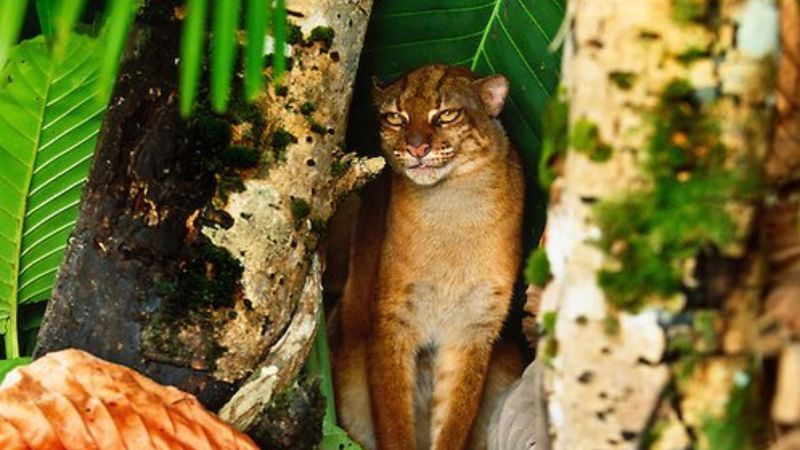
Mystery cats of Borneo! Bay cats are so rare and secretive that scientists know almost nothing about their behavior in the wild. Their chestnut-red coat (resembling a bay horse) helps them vanish into the forest understory.
First described scientifically in 1874, they weren’t photographed alive until 1998. Endemic only to the island of Borneo, they face serious threats from deforestation. Their population may be fewer than 2,500 individuals. Unlike many cats, they appear to avoid human-modified landscapes entirely.
14. Kodkod
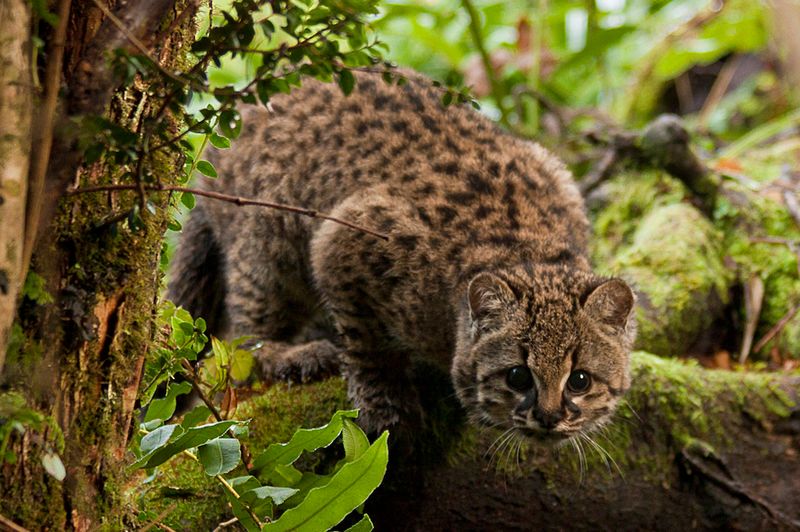
South America’s tiniest tiger! Also called the güiña, these small spotted cats from Chile and Argentina weigh just 4-5 pounds. Their oversized paws help them navigate the forest floor and climb with ease.
Adaptable survivors, kodkods live in diverse habitats from sea level to 7,000 feet elevation. They’re one of the only wildcats that readily adapt to human-altered landscapes, sometimes hunting in orchards and farms. Their large eyes provide excellent night vision for hunting in the dark Andean forests.
15. Sand Cat
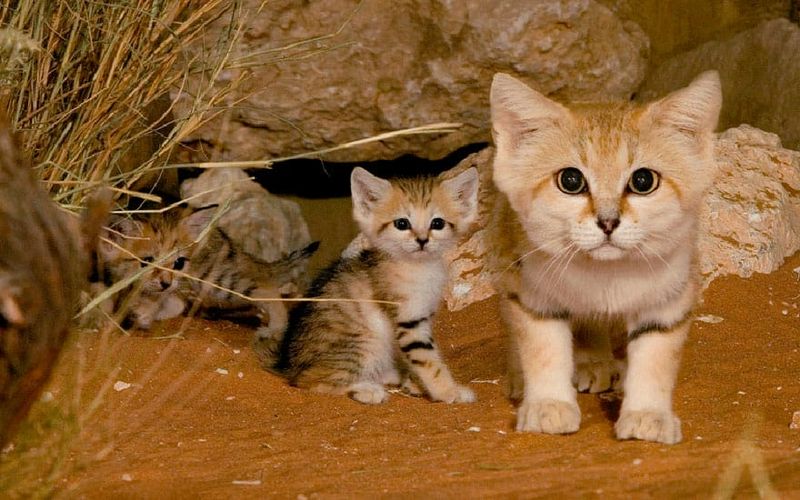
Desert masters who never need to drink water! Sand cats survive in the harshest deserts of North Africa and Central Asia where temperatures swing from 126°F by day to below freezing at night.
Their thick fur-covered feet protect them from hot sand and leave minimal tracks. Specialized kidney function allows them to obtain all moisture from their prey. Their ears have evolved to hear prey moving underground, which they’ll dig out with powerful paws. They can disappear by flattening their bodies against the sand.
16. Chinese Mountain Cat
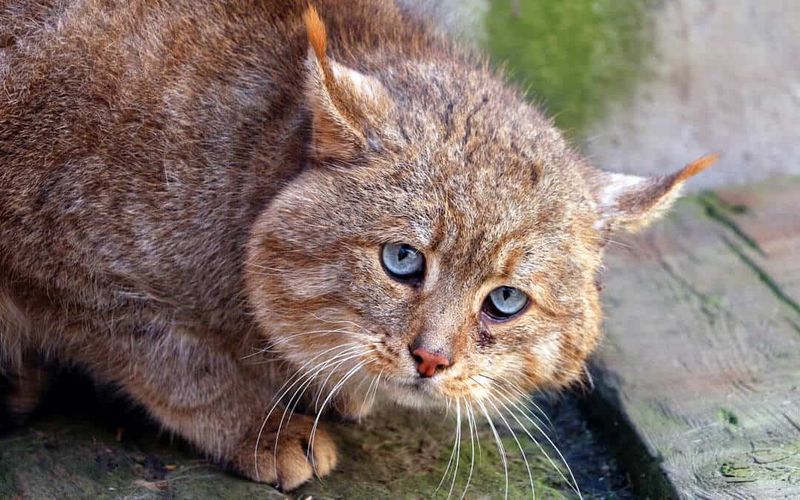
Elusive highlanders barely known to science! Chinese mountain cats remained so mysterious that they weren’t confirmed as a distinct species until 2007. Their sandy-gray coat blends perfectly with the high-altitude grasslands of the Tibetan Plateau.
Unlike most cats, they’ve adapted to live at elevations up to 10,000 feet. They primarily hunt plateau pikas and rodents that thrive in their harsh habitat. Rarely seen by humans, most scientific knowledge comes from camera traps. Their blue-green eyes shine unusually in the dark.
17. African Golden Cat
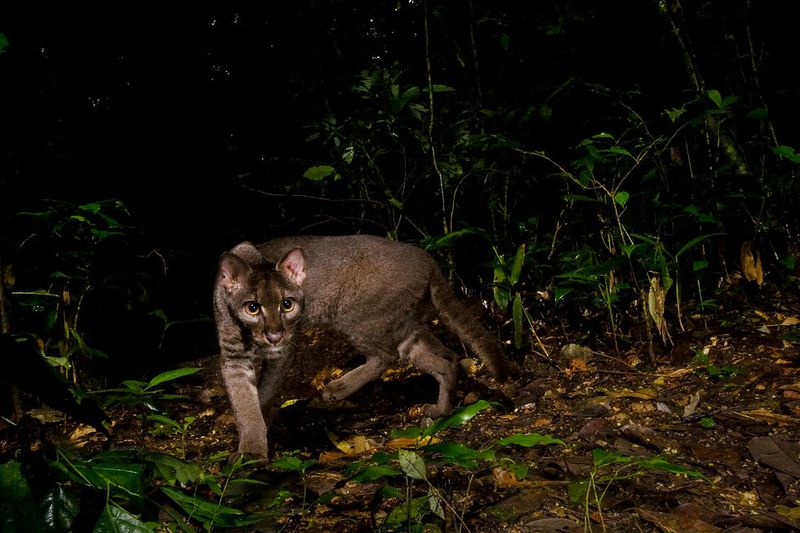
Forest phantoms with color-changing coats! African golden cats can appear either reddish-gold or slate-gray, sometimes even in the same litter. These secretive medium-sized cats inhabit the rainforests of Central and West Africa.
Powerful hunters, they’re one of the few predators that regularly target both monkeys in trees and forest antelopes on the ground. Some African tribes consider seeing one to be extremely bad luck. Camera trap studies revealed they’re primarily active at dawn and dusk, avoiding both day and night.

